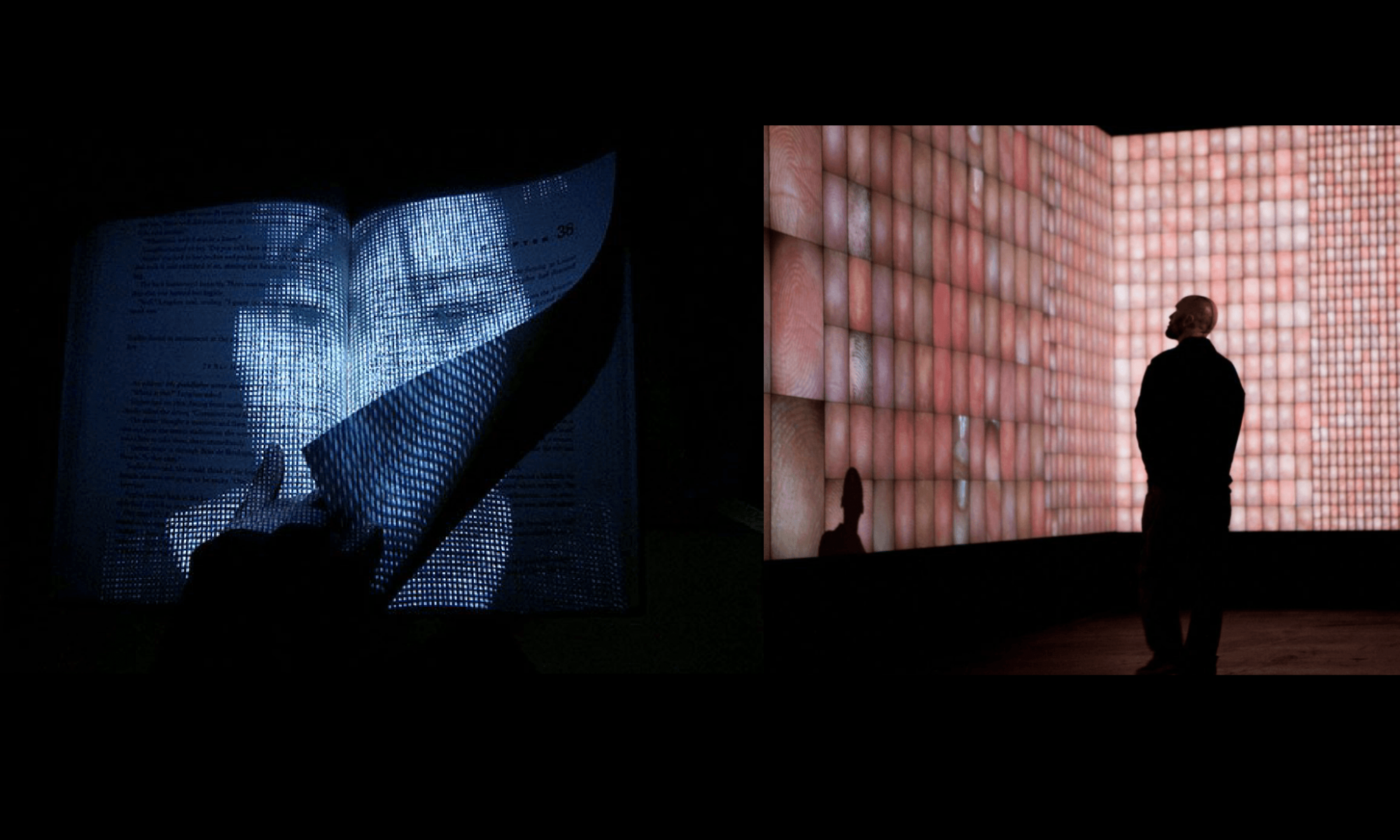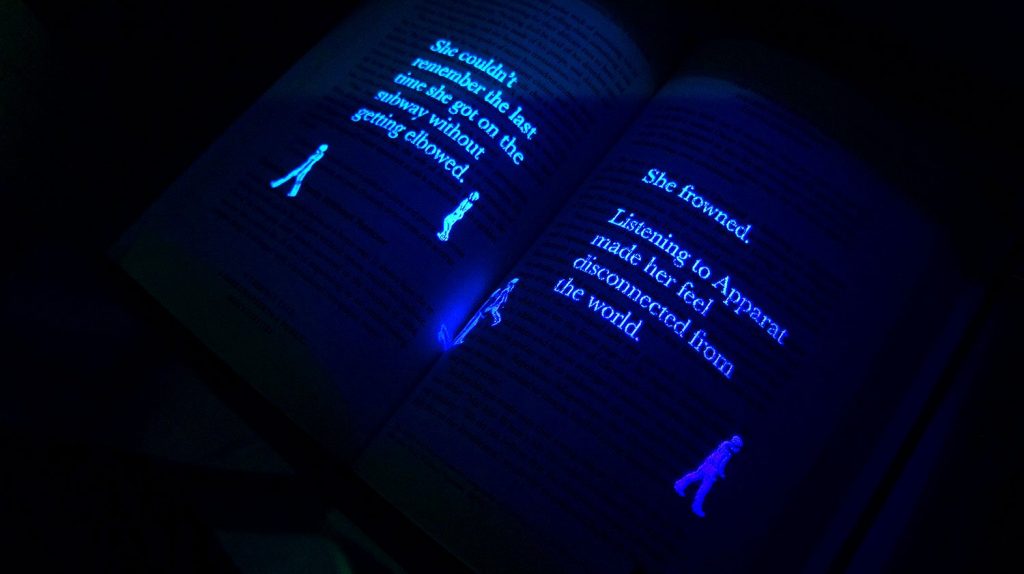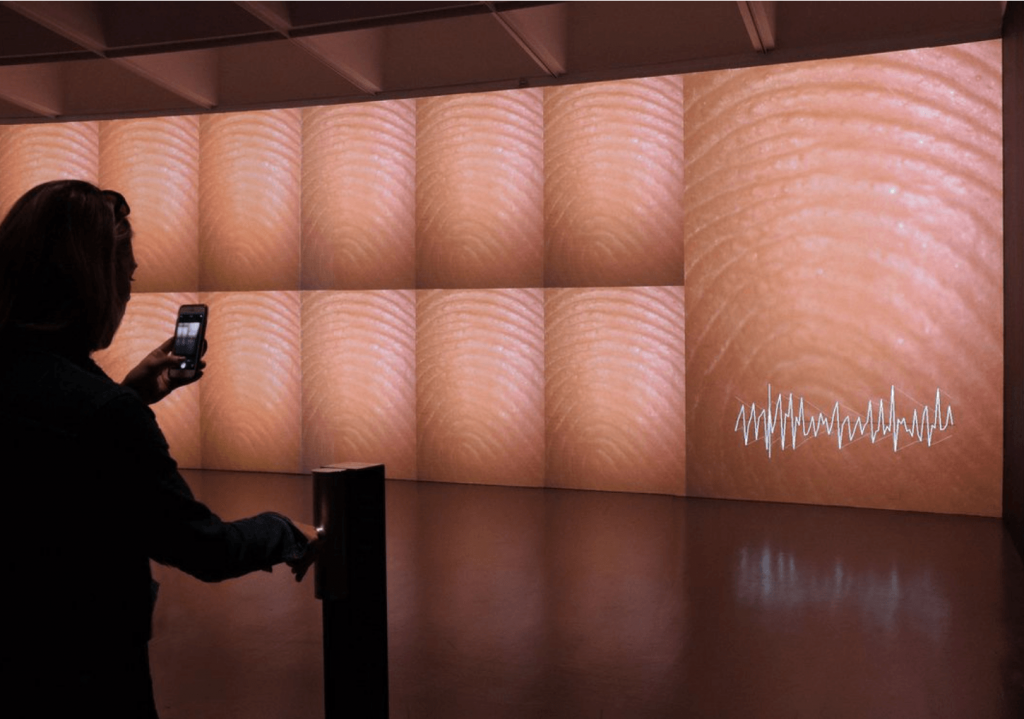Project: Facebook (2019)
Designer: Lim Si Ping (Handson)
“With the proliferation of social networks and data tracking, the wisdom of computer algorithms and surveillance mobs has been elevated over the locked-in immortality of individual.” – Handson
Facebook (2019), an interactive book that was designed by Lim Si Ping (aka Handson). As you browse through this interactive book for the first time, the camera uses facial recognition to pair your profile with data tracked through search engines. The book draws a back-end algorithm and fills in the blank of the narrative with your name, age, gender, location, and birth date. With a turn of each page, the story unfolds, making you the protagonist of this story.
In previous lesson, we discussed that reading is a form of interactivity. However it is a low degree of interactivity in terms of participation, control, etc. As compare to Facebook (2019), this interactive book injects user into the narrative plot, allowing user to participate as a protagonist and creating a storyline based on their personal data that has been publicise online. Both the normal book and the interactive book has similar control such as flipping the book. However the outcomes are different. For a normal book, the outcome of the story has been guided by the narrative. But for the interactive book, the outcome changes depending on the user and data that has being gathered, creating their own unique narrative. Hence, for the interactive book, audience have control over the outcome of this interactive book, unlike the normal reading.
In short,
- Why do I find this artwork or project intriguing? Because each person who interact with Facebook (2019) will have their own narrative based on their personal data that has been publicise online.
- What is the situation or interaction created for the viewer? Firstly, there will be a facial recognition to pair your profile and data tracking through search engines. Then user will start to flip the pages. As they flip a page, they will be reading about themselves.
- What is the intention of this interaction? Allowing user to be real-time protagonist of the story, and to see how their personal data can be found easily online.
- What is the role of the viewer? Interact, read the book and find themselves as part of the story.
- Who has control over the outcome of the artwork or project? Is it the creator / artist or the viewer/audience? Audience!
Project: Pulse Index
Designer: Rafael Lozano-Hemmer
“We live in an era where a fingerprint lets you into your country, or it lets you into your phone,” says Rafael Lozano-Hemmer “But how can we pervert that? How can we misuse these technologies of control to create connective, poetic or critical experiences? That’s what this show is about.” (refers to Pulse Room exhibition)
Pulse Index, is a biometric installation which is part of the Pulse Room exhibition. In this installation, it records participants’ fingerprints and heart rates at the same time. The piece displays data for the last 10,925 participants, and it creates a spiral room of skin.
To participate, visitors will place their finger into a custom made sensor equipped with a digital microscope and a pulsimeter. Their fingerprint will then immediately appears on the largest cell of the display, pulsating to their heartbeat alongside the heartbeats and fingerprints of others. As more visitors try the piece, one’s own recording travels sideways and is reduced in size until it disappears altogether — a kind of memento mori.
“We call it a memento mori, because it’s just a reminder that we’re here for just a little bit of time,” says the artist.
I find this project intriguing because of the concept behind it — Heartbeat as an involuntary action & Participation of audience.
Heartbeat as an involuntary action
Rafael Lozano was inspired by the ultrasound of his twin babies during his wife pregnancy, and how it will sound when both babies heartbeat are heard at the same time. In one of his talk, he mention that heartbeat is something that we can’t control, it is these involuntary spasms that makes it beautiful. With this, my take away from his work is that interactive media project does not only applies to voluntary behaviours, such as raising your hand, walking near or away from it. It can also be something involuntary such as blinking and breathing.
Participation of audience
Lozano-Hemmer’s work depends on audience participation to exist. It is a crucial part in making the work interactive, and to encourage public to be part of the art and reflect on the unavoidable and playful technological experience. Since his earlier works, he has been incorporating audience and allowing them to contribute into his work. An example of his earlier work is Vectorial Elevation, 1999, which allows audience to design their own light sculptures and it will be executed real life in Mexico City. For Pulse Index, audience is needed to create a whole display which consist of fingerprints and the sound of our pulse. Each audience plays a role in activating and developing it to create memento mori effect. Without the participation of audience, the work would not exist and develop. Hence it would not be an interactive work.
In short,
- Why do you find this artwork or project intriguing? Because of the concept behind it — Heartbeat as an involuntary action & Participation of audience
- What is the situation or interaction created for the viewer? A small device for audience to insert their thumbprint and it will record their heartbeat, the projecting it into a large screen with other people thumbprint and heartbeat.
- What is the intention of this interaction? It is about the collaboration between audience
- What is the role of the viewer? The role of the viewer is to make the work exist and develop from there.
- Who has control over the outcome of the artwork or project? Is it the creator / artist or the viewer/audience? Audience, a lot of them!
Questions:
- How are both projects differ from each other?
- In Pulse Index, does memento mori serve as a limitation?
references:
http://hellohandson.com/work/facebook/
http://www.lozano-hemmer.com/pulse_index.php
https://hirshhorn.si.edu/exhibitions/rafael-lozano-hemmer-pulse/
http://manchesterartgallery.org/exhibitions-and-events/exhibition/recorders-rafael-lozano-hemmer/




